

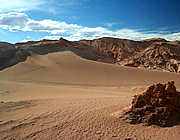
We had only three days in San Pedro de Atacama but squeezed in two visits to the desert and a few side trips. High points were the huge sand dunes, many volcanoes and the spectacular sunsets.
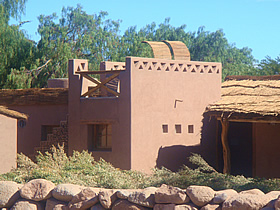
We didn't get off to a great start when our transport was over an hour late picking us up from the Bolivian border. Only a driver on board and he had very little English. He said he'd had trouble with the vehicle but we suspect they forgot about the time difference!
47km to San Pedro de Atacama where we were staying, downhill all the way. An English-speaking guide met us at the customs post and helped with the formalities - it's quite an intimidating procedure. It didn't take too long but they search every piece of luggage looking for any of the many forbidden imports such as fruit, vegetables, dairy produce, meat, etc. etc.
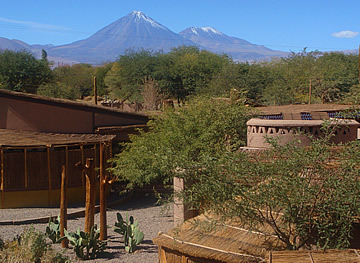
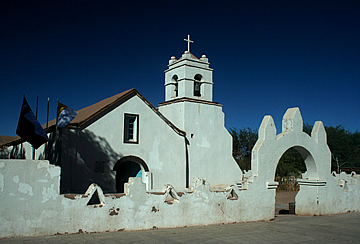
Things looked up considerably when we reached our hotel, the Altiplanico, which is lovely. Not too many people there and we were given the best room which had its own roof terrace with shady chairs - each room is actually an adobe "cottage" all self-contained.
The view from our roof terrace was fantastic: volcanoes!
San Pedro de Atacama is a sleepy town of low buildings and dirt roads, full of aging hippies and younger wannabes! It's peaceful with plenty of places to eat, we found a good one on the little central square. It was easy enough to walk into the town from the Altiplanico, though street lighting is minimal!
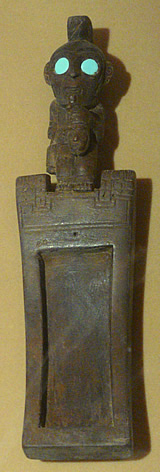
The R. P. Gustavo Le Paige Archaeological Museum is excellent, with hundreds of pre-Columbian artefacts in extremely well-organised displays. It's small but very well laid out and with a sufficient number of exhibits to provide interest without being tiring. It charts the history of the area from around 10000BC and I was particularly interested to see artefacts which showed the influence of the Tiwanaku culture. They have several examples of snuff trays which we had seen depicted on monoliths at Tiwanaku, though their version of snuff may have been slightly more hallucinogenic than ours!
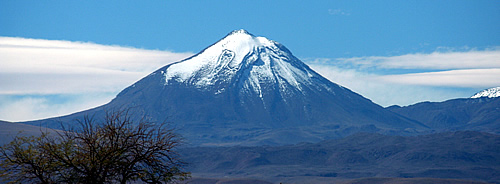
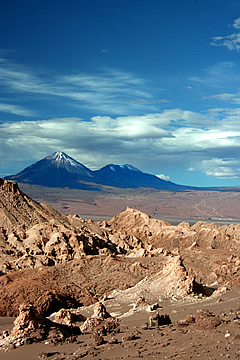
We had a guide and driver to explore the area, first going to the Valley of the Moon, with rock formations, but more interesting to us, big sand dunes. Open salt mining used to be practiced here, very primitively blasted out of the ground with dynamite.
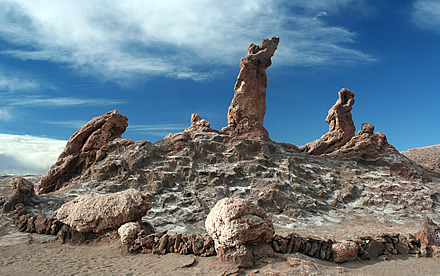
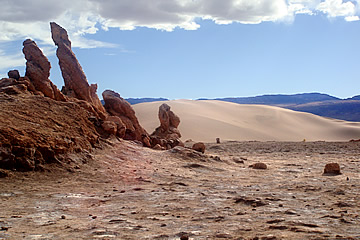
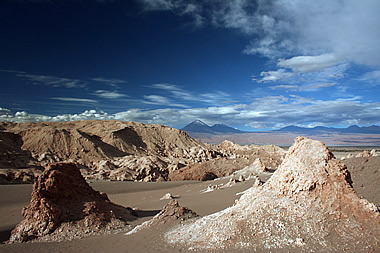
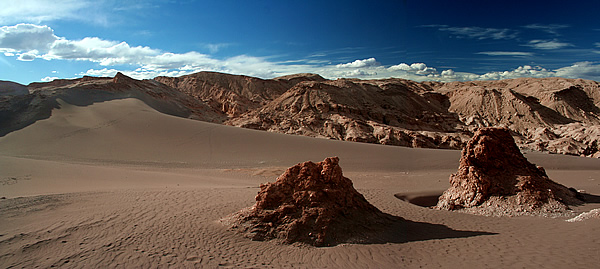
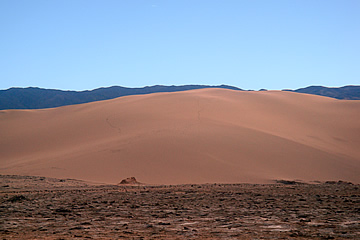
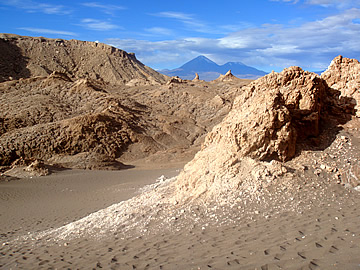
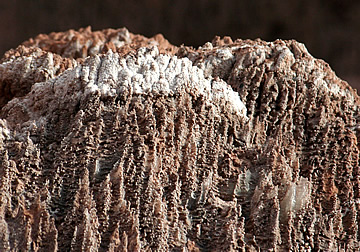
The Atacama Desert is said to be the driest desert on earth, extending 1,000 km down the western coast of South America. However, it lies on the eastern side of a range of mountains which shield it from moisture-laden clouds drifting in from the Pacific Ocean. Though dry it is not particularly hot, and even supports salty lakes left over from heavy rainfall in the dim and distant past.
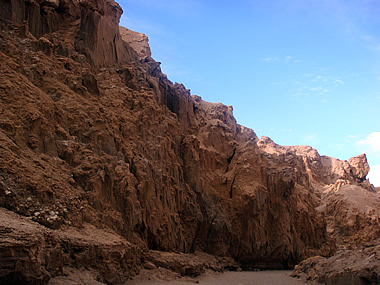
A little deeper into the desert we went for quite a long walk in a canyon. It was very peaceful and cool there, apart from the eery cracking of the rocks all around.
There were some beautiful rock walls, with minerals or salts creating patterns in the textured surfaces.
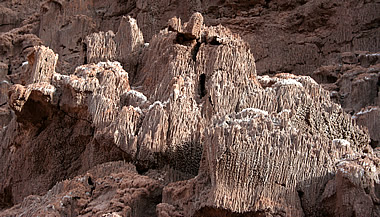
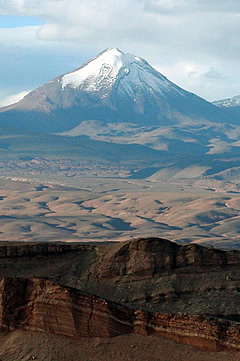
Late in the afternoon of our first day exploring this part of the desert we were taken up onto a long sharp ridge, high above the desert floor, to wait for the sunset - a popular tourist activity and we were not alone up there!
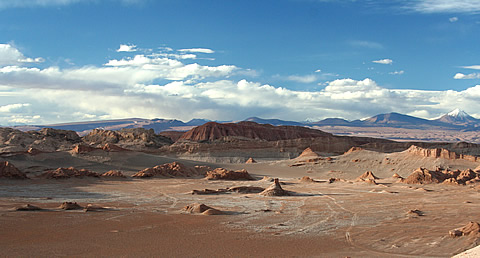
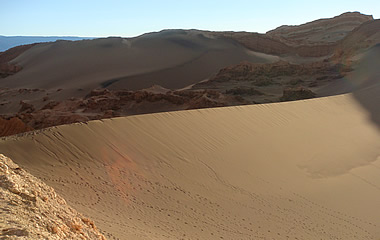
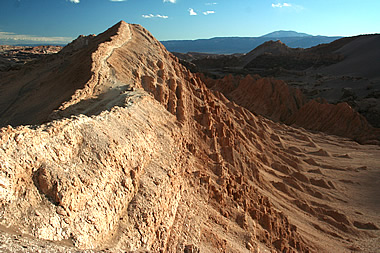
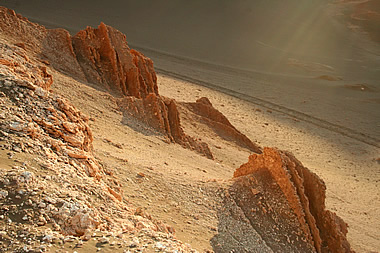
There are some enormous dunes here but the landscape is generally one of rocky ridges and outcrops emerging from a sandy desert floor. Snow-capped volcanoes, mostly dormant I think, in the Andes complete the spectacular view.
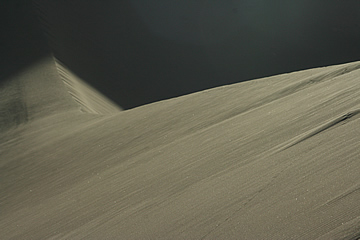
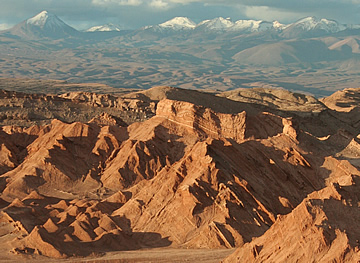
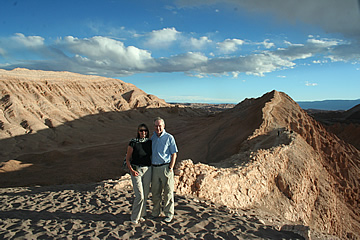
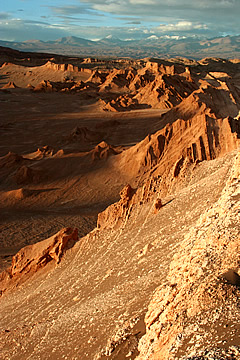
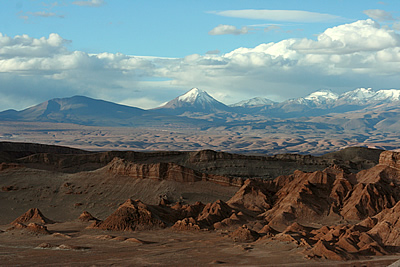
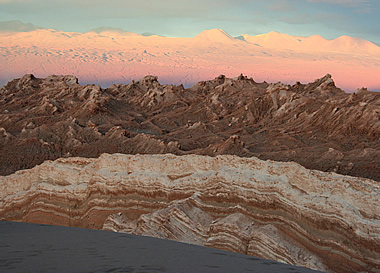
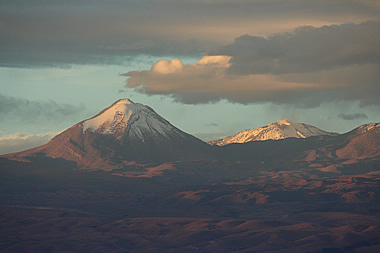
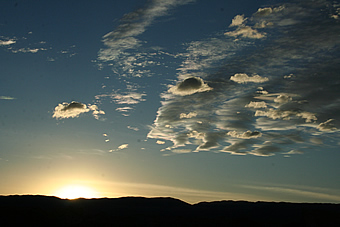
As the sun sank in the sky the nearby rocks glowed and to the east the Andes began to turn pink.
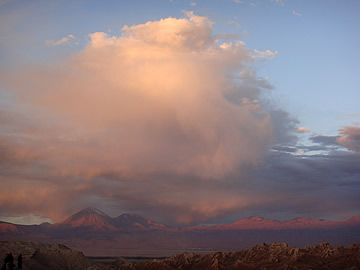

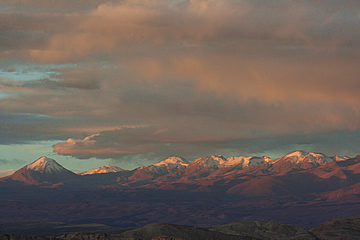
As the shadow crept over the desert floor the mountain range seemed to float in the sky.
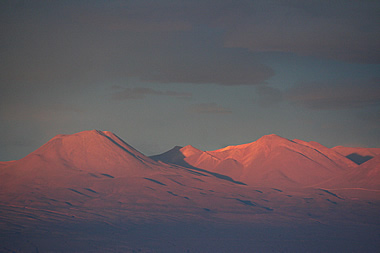
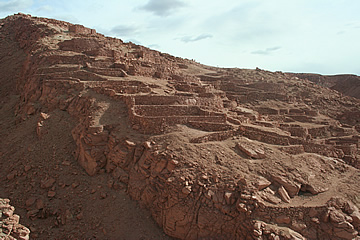
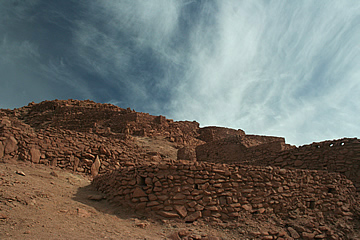
At night, with clear skies, the stars are fantastic to see - Southern Cross, Milky Way - though it was too cloudy in the earlier part of the evening to go on one of the star tours offered in town.
The following day we were to be taken out in the afternoon and early evening, again to catch the sunset. So we spent the morning walking up to the Pukará de Quitor, a large pre-Columbian fortress sprawling up a hillside 3km north west of the town. It is apparently from the time of the Atacameño people, who occupied this land from around 9,000BC. Between 400 and 1000 AD the Tiwanaku held sway in this region, though they did not establish permanent colonies.
The Pukar (fortress) dates roughly from the end of this period, 950 - 1450AD, and was strategically sited to guard trade routes as well as the local settlements.
The Inca then became briefly influential here, until the Spanish invaders arrived.
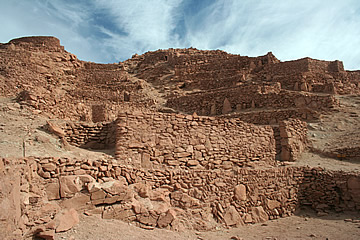
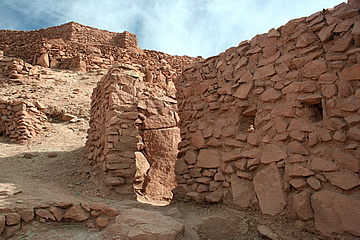
We had to cross a fast-flowing river on stepping stones - overnight it had snowed in the Andes! On our return a couple of hours later it was completely dry.
We arrived at about 9 a.m. but there was no-one at the ticket office. Some locals in a nearby house waved us to go in - we paid on the way out.
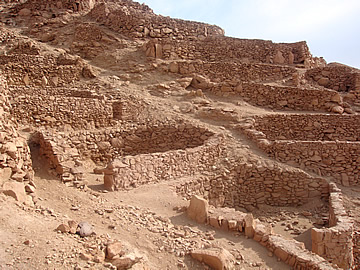
A rough track meanders up the hillside between a honeycomb of walled enclosures, presumably once the rooms or houses of the fort. Curiously there is no encircling wall.
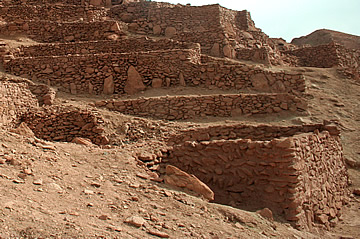
There has obviously been reconstruction work here, and most of the walls are extremely roughly put together. It's hard to know how authentic the actual buildings are but the layout is probably close to the original.
It's a very pleasant walk through the San Pedro river valley and, on a clear day, the views from the top of the fortress stretch out to the volcanoes of the Andes.

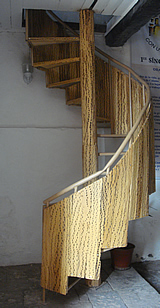
That afternoon we travelled a good distance south to the Salar de Atacama, visiting the small oasis village of Tocanao on the way, the very definition of "sleepy". Cactus wood is used to make all kinds of things here, including the door of the bell tower and a spiral staircase in the church.
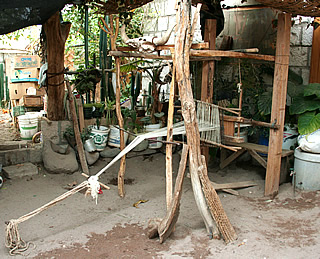
We visited the shop of Señora Luisa. She was outside tending her produce garden which had orange and lemon trees and huge oval green fruit which looked like melons, the flowers similar to courgette flowers. She picked a couple of small lemons for us - they smelled wonderful.
We went on from here into the eastern Soncor sector of the Salar de Atacama to visit Laguna de Chaxa.
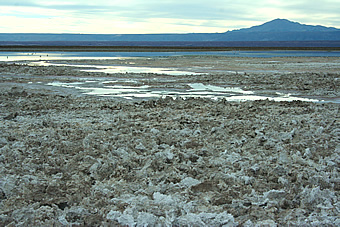
The Salar de Atacama is the second largest salt lake in the world after the Salar de Uyuni in Bolivia, covering approximately 30,000 sq km.
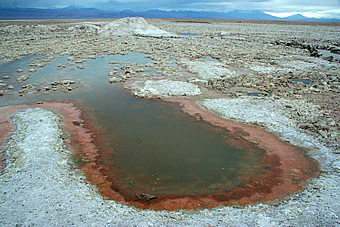
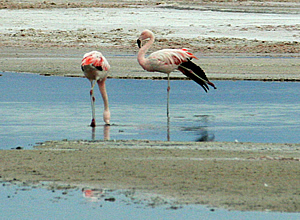
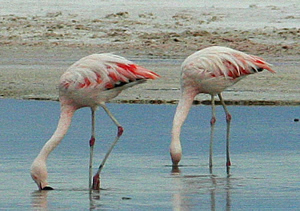
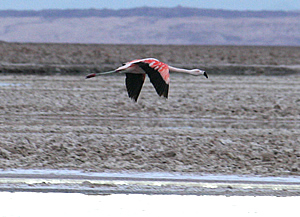
The salt surface is much more reminiscent of the salt flats in Death Valley in the USA than Salar de Uyuni, being a very rough salt crust left behind from the evaporation of heavily salt-laden water.
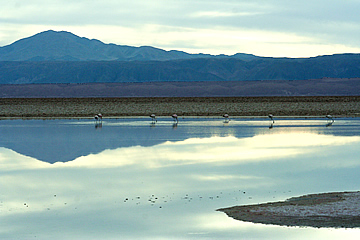
Three of the world's five species of flamingos can be seen here: James, Chilean and the very rare Andean. There were quite a lot of flamingos grazing but we could only identify for sure the Chilean flamingos as we couldn't see many feet or bills - most had their heads firmly below the water foraging for food! They feed on tiny shrimps which it's possible to see in one of the clear pools in the salt flats.
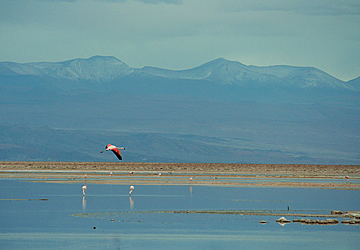
The James has a yellow bill with a black tip and red legs and feet. The Andean flamingo has a much greater proportion of black to the end of the bill, which is a pale yellow above the black, and yellow legs and feet. The Chilean flamingo also has a large amount of black to the bill and pink feet but is most easily distinguished by its pink knees!
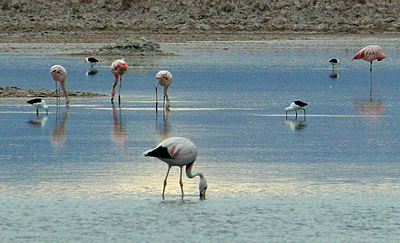
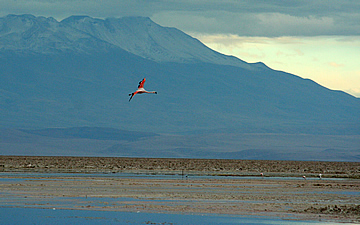
We also saw Puna Plover, Andean Avocet - a gorgeous black and white bird - and a mouse! The mouse lived in the salt, burrowing down into it where it no doubt had a cosy nest.
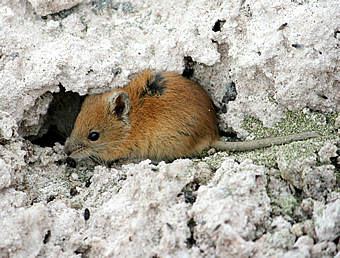
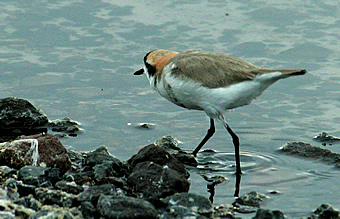
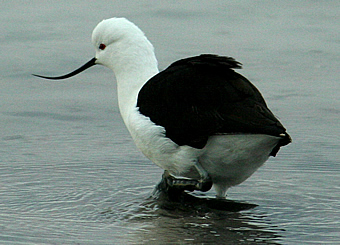
Dawn or dusk are good times to see the wildlife which comes out to look for food at this time.
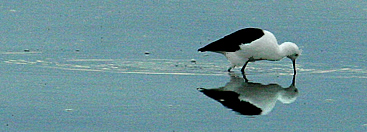
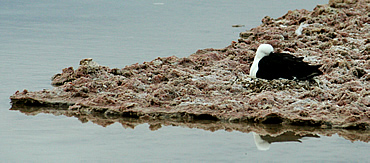
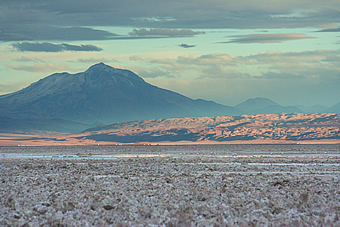

We spent rather a long time here but this gave us an added bonus of the most spectacular sunset we've ever seen - even the guide and driver got out of the car to take photographs!

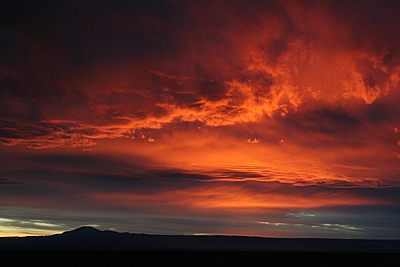

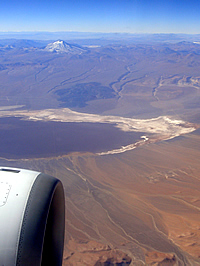
The following day it was wonderfully clear for our flight to Santiago. Our pick-up was at 7am so we were up at 5:30 - the stars were still visible. The drive to the airport in Camara took less than 90 minutes and we were treated to the sight of fumarols from the Putana volcano.
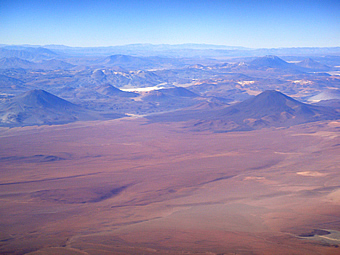
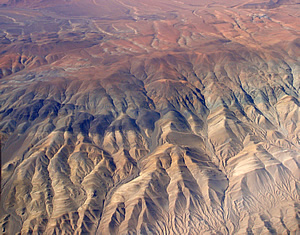
We passed mostly through dry, gravelly, stony, hilly desert. Outside Calamara there is a huge copper mine, apparently the largest open-cast mine in the world, though, according to our guide, the region sees nothing of the revenue from it.
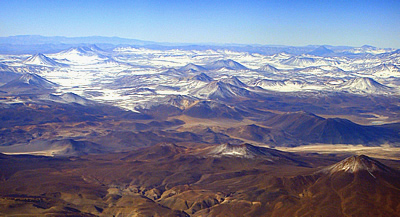
The flight was wonderful, over the desert and along the western edge of the Andes. The views were spectacular, especially of the many volcanoes.
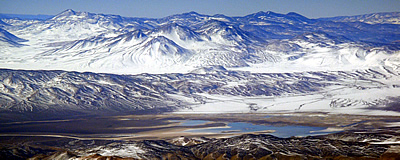
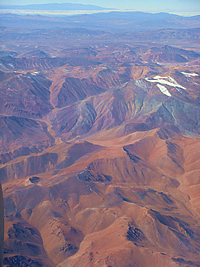
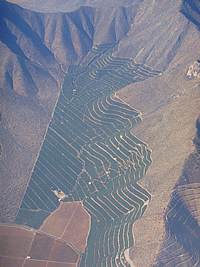
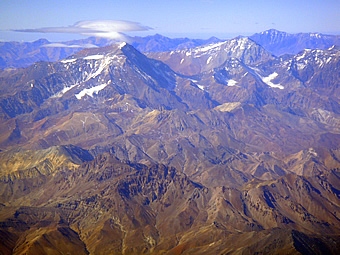
We had only one day in Santiago so didn't really see anything of the city, concentrating on finding a decent lunch - Voraz pizza highly recommended plus good micro brewery beer. In the evening we ate at the hotel, the Santiago Park Plaza, though the meal wasn't anything special (breakfast was excellent), the Chilean Merlot was superb!
We've no more than scratched the surface of Chile but we plan to return, probably to the south and Patagonia.
In 2013 we did just that, visiting fascinating Easter Island, the beautiful volcano-strewn Patagonian Lake District and the fabulous mountain landscapes of Torres del Paine.